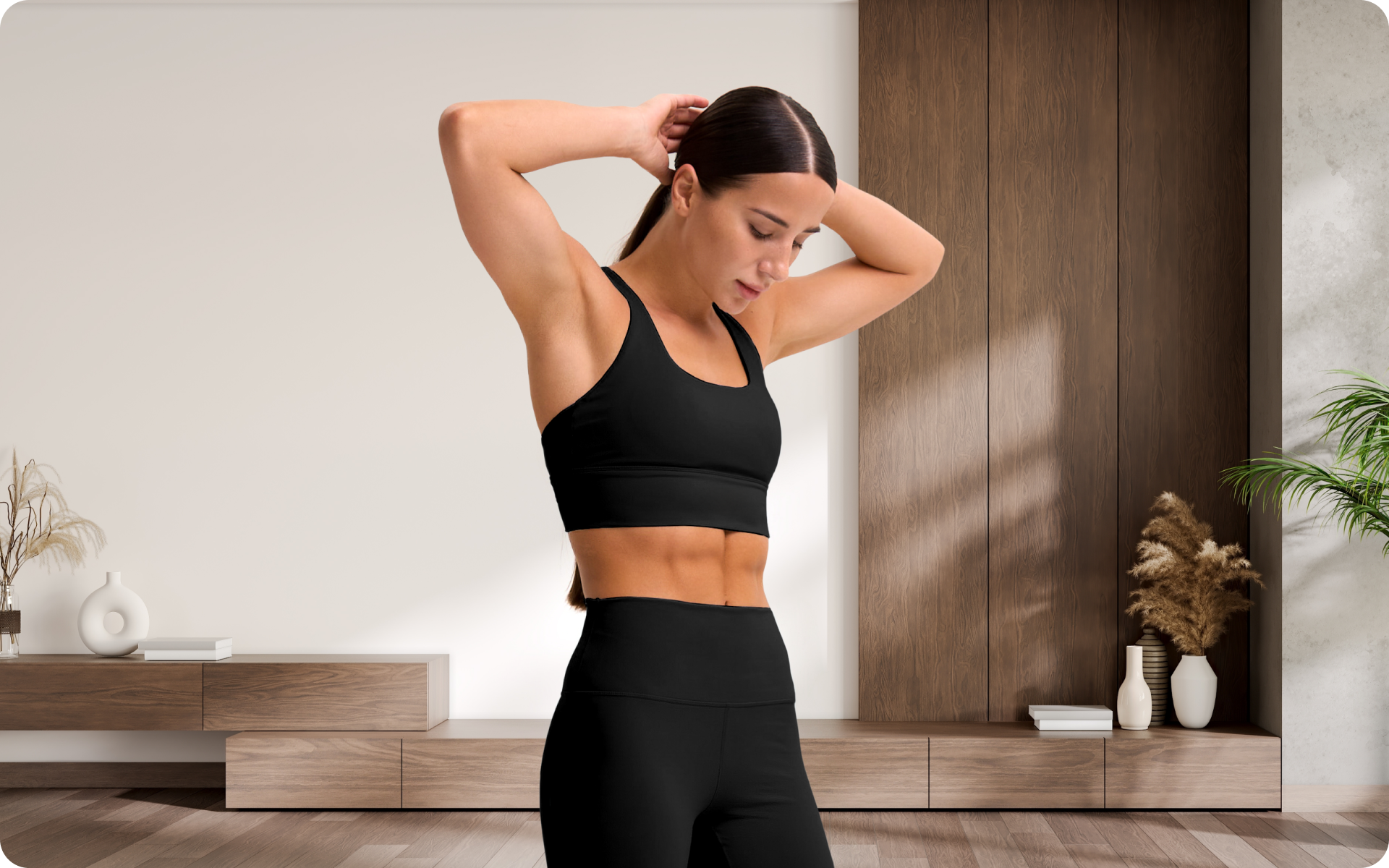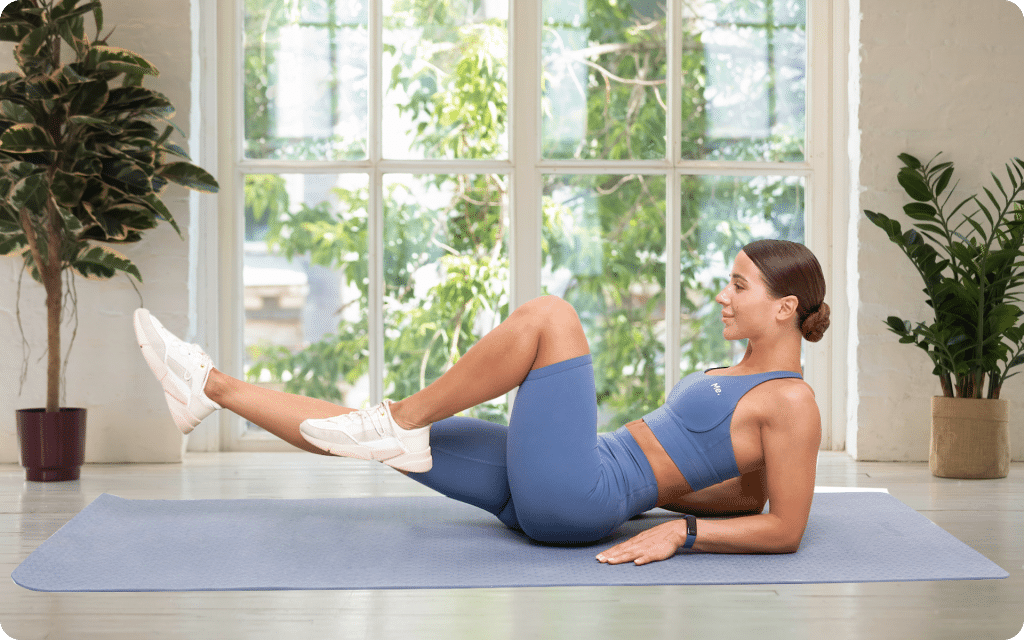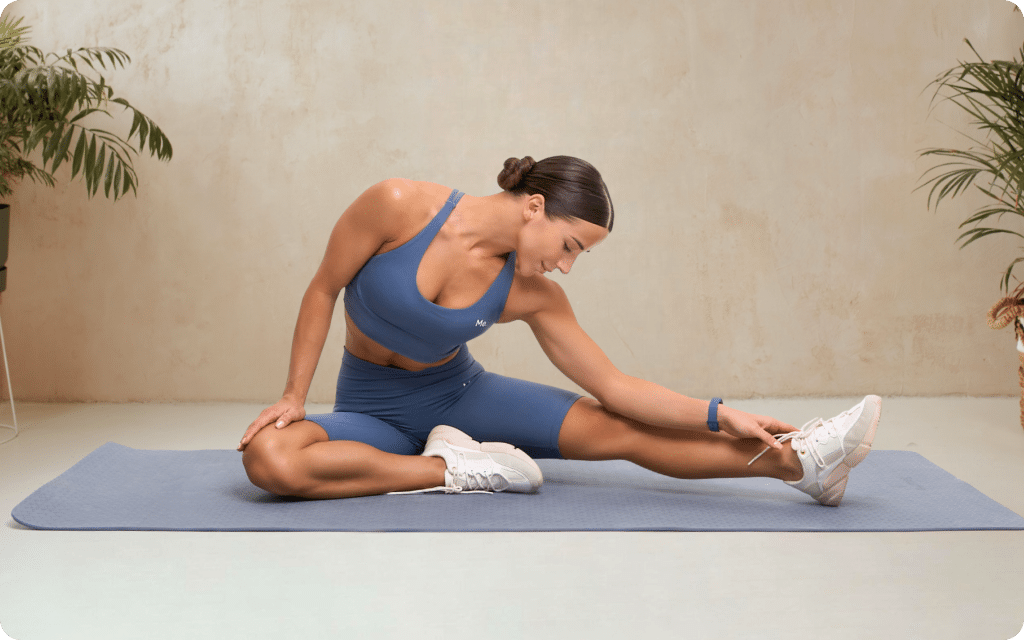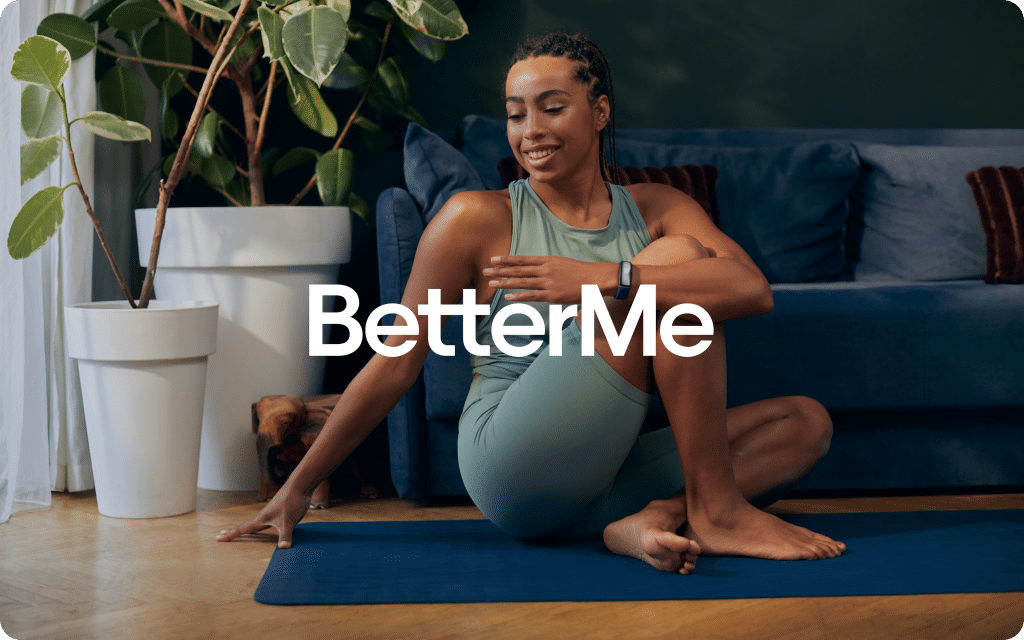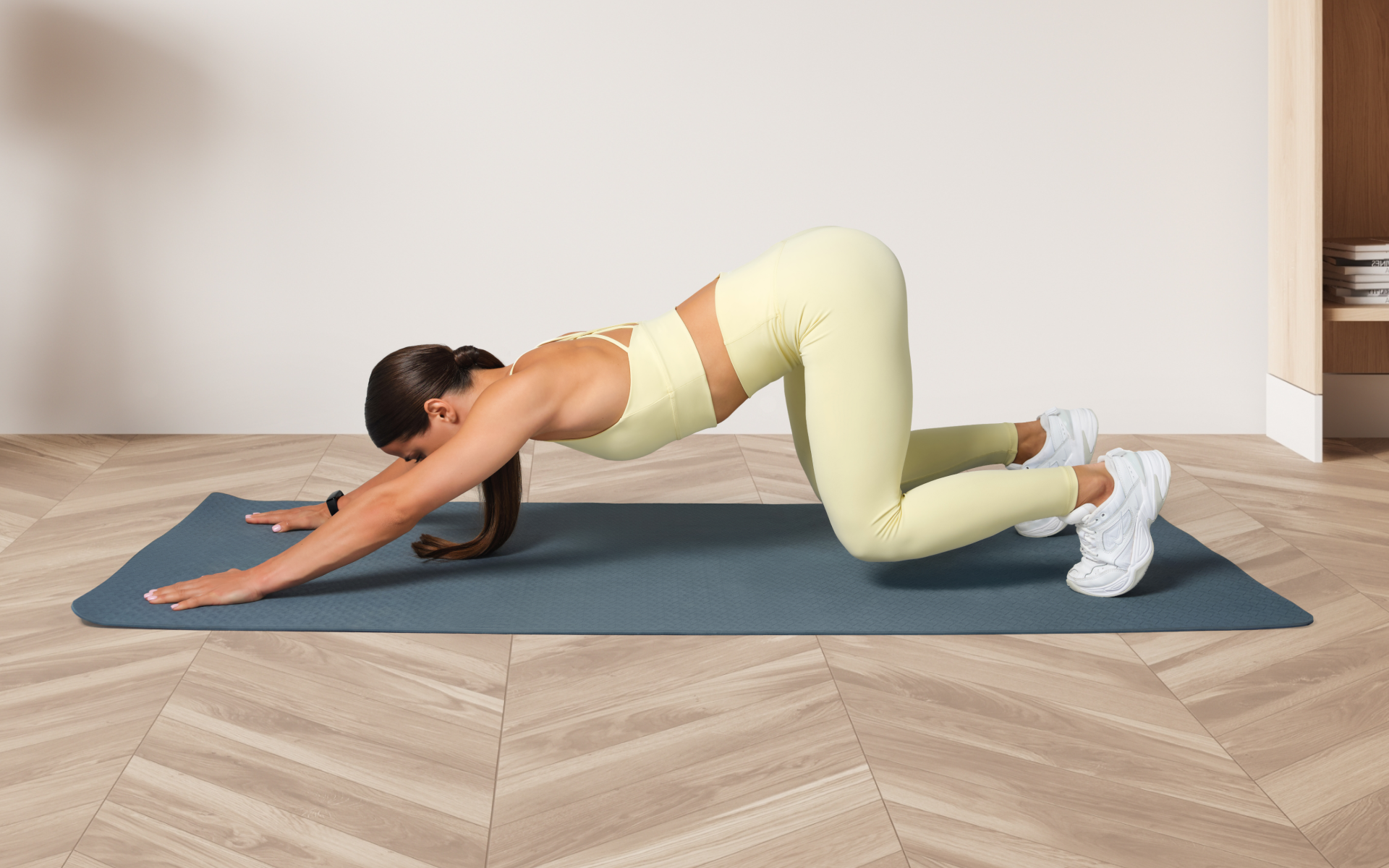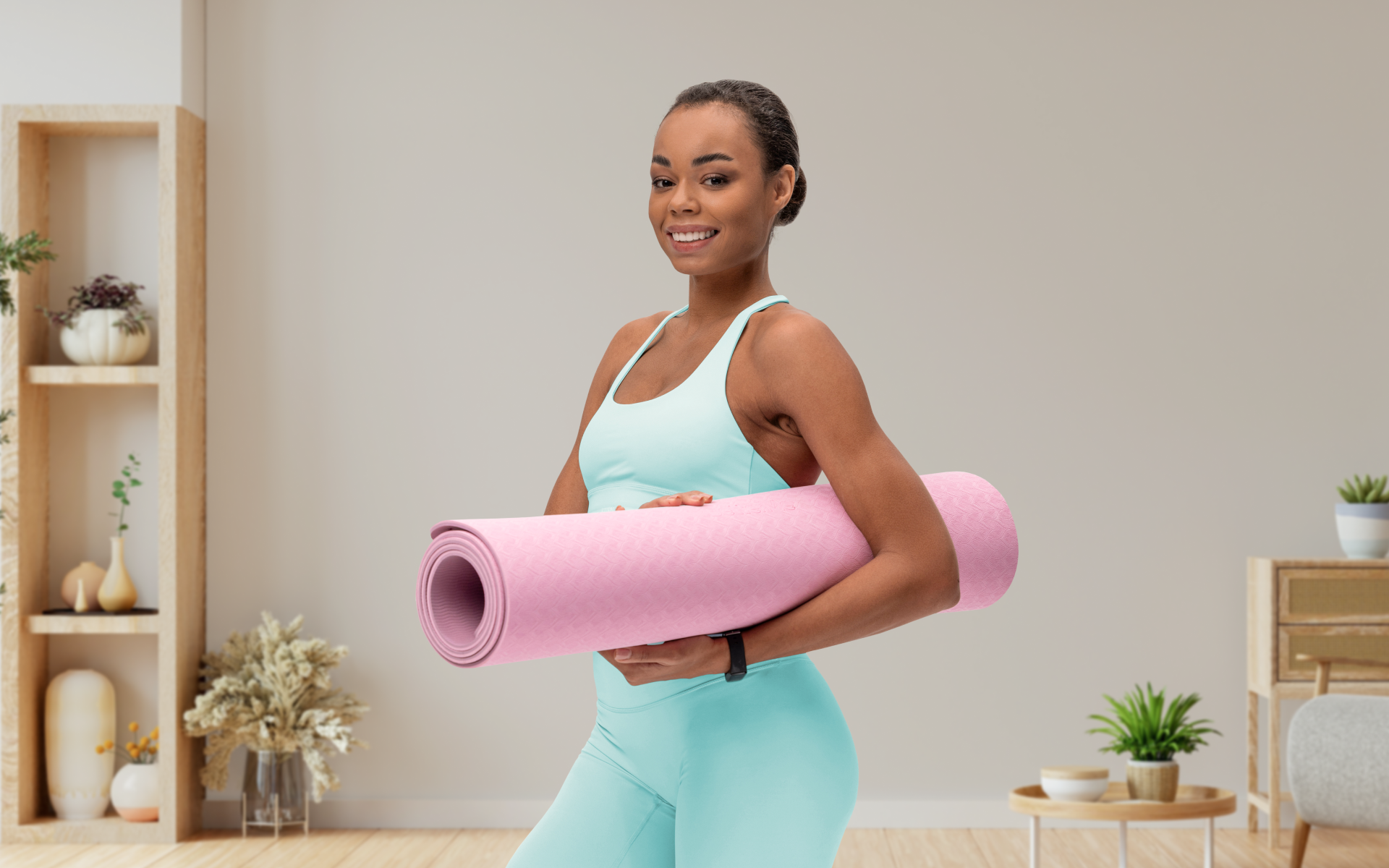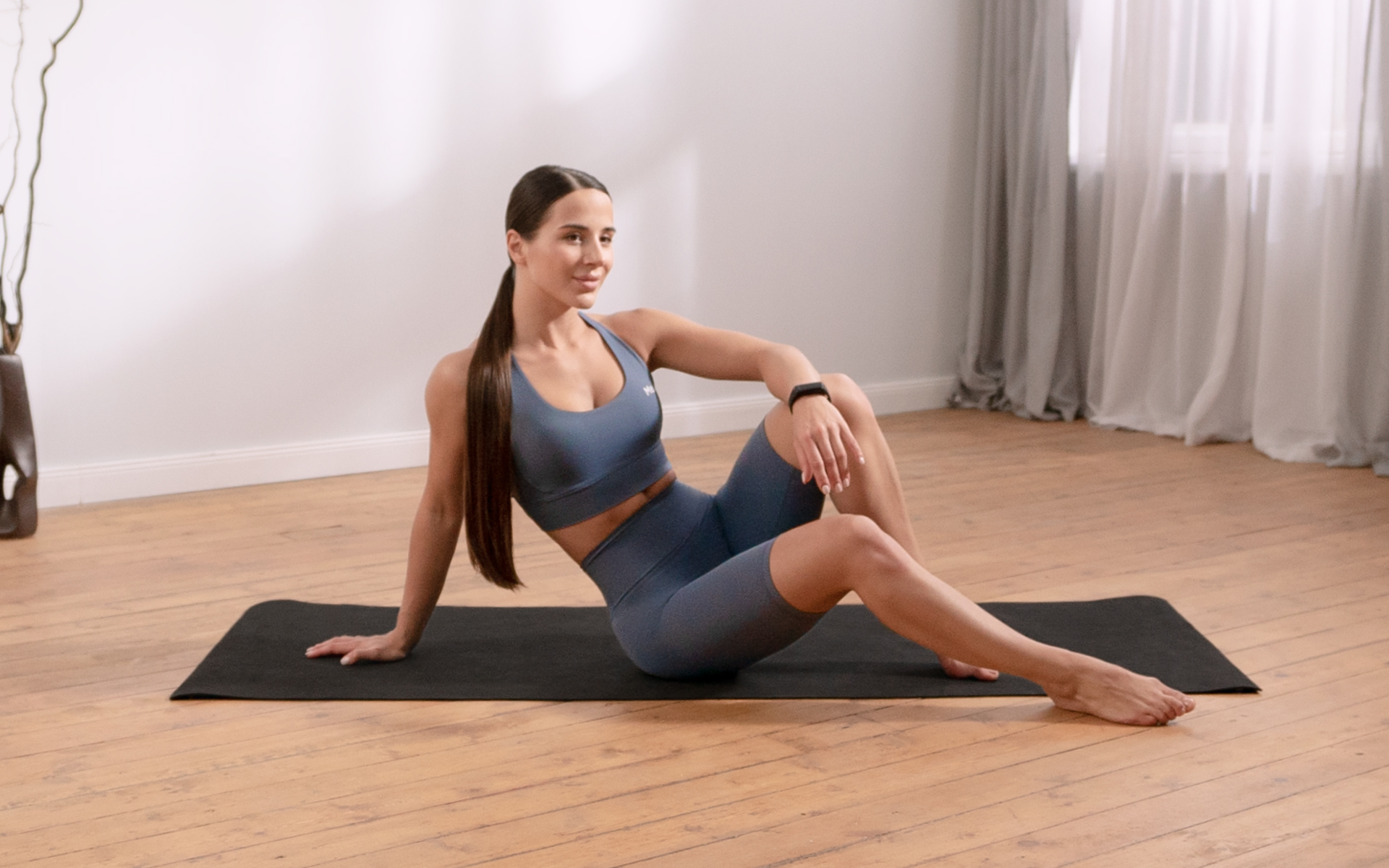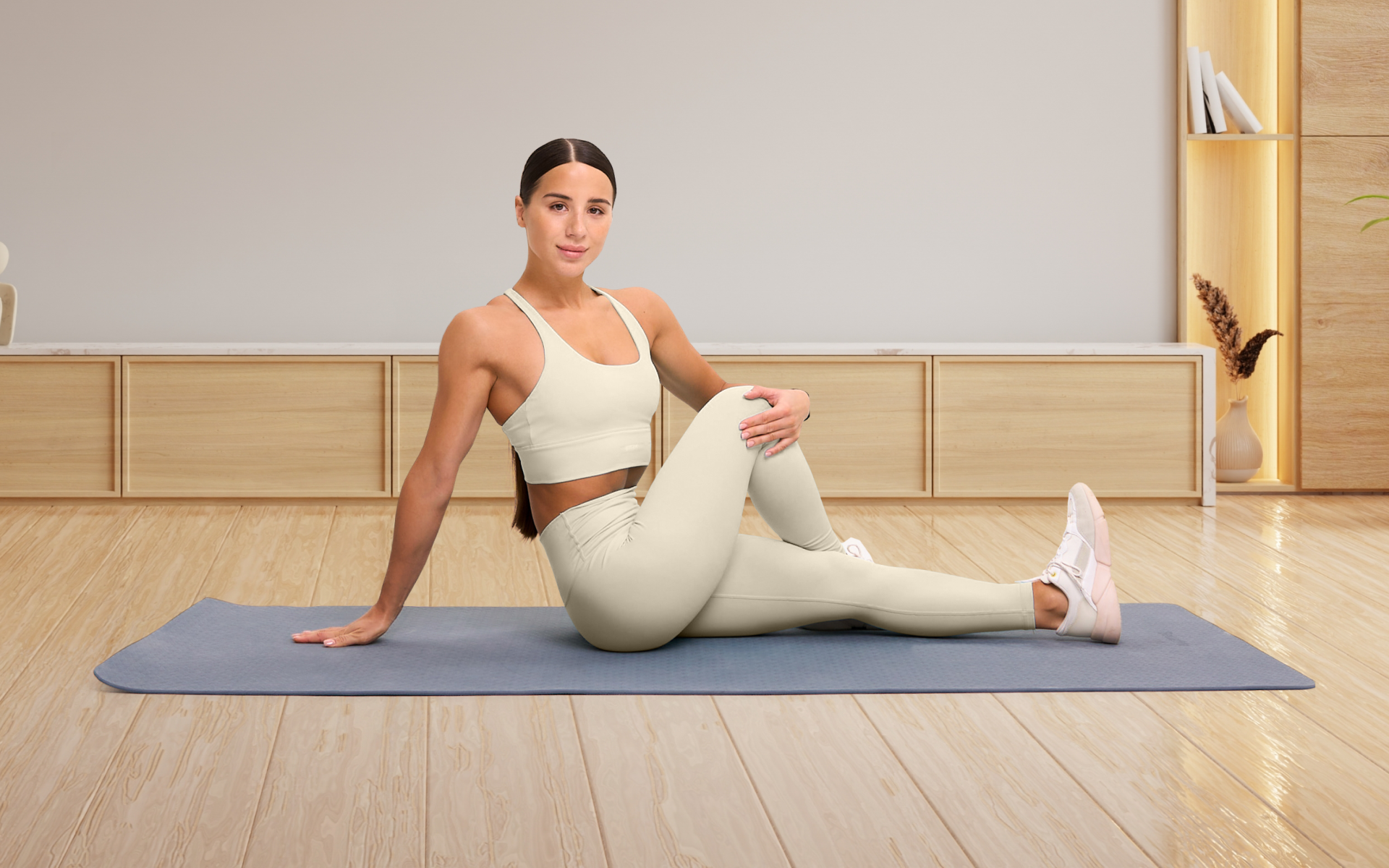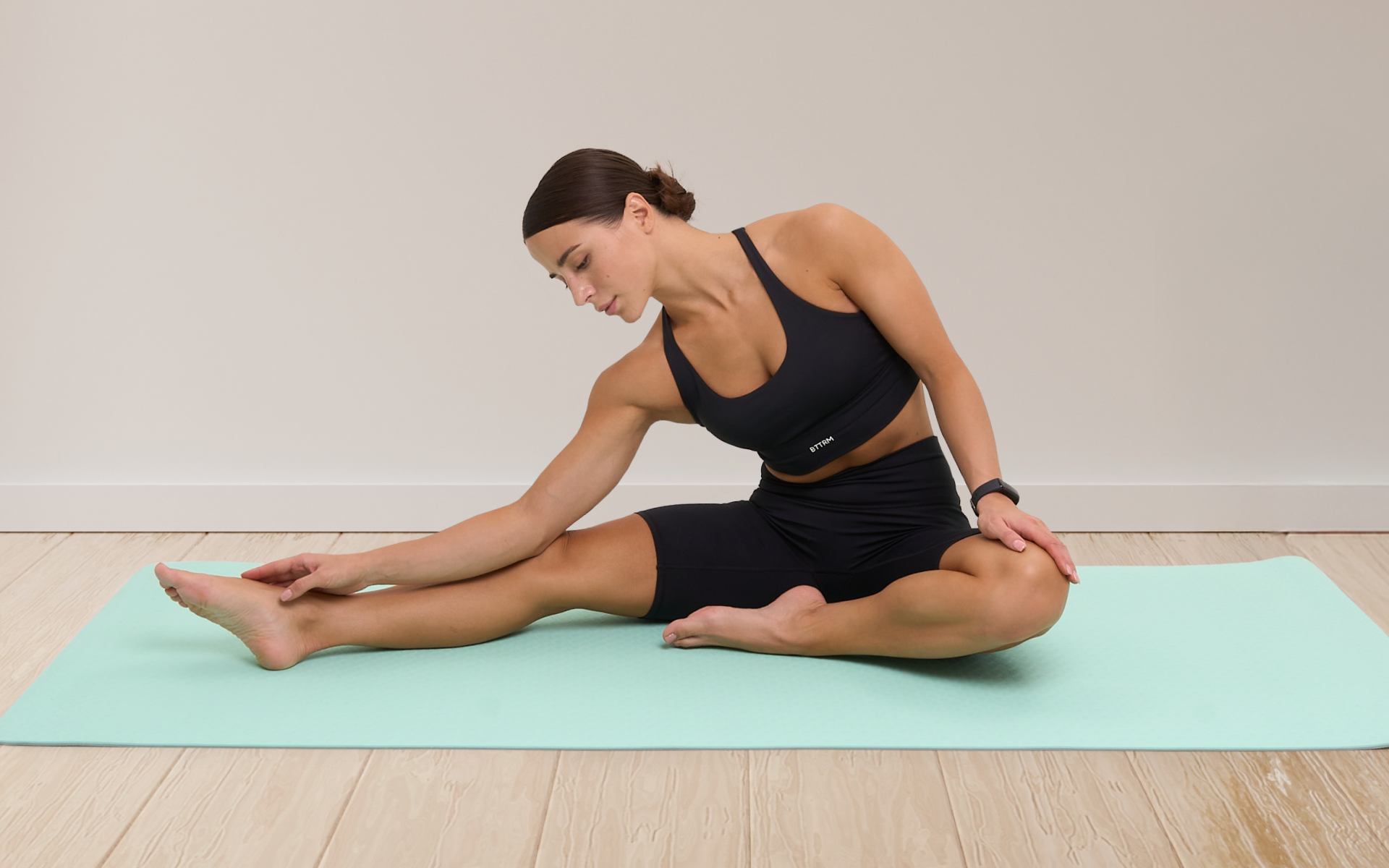Pilates has become the next big thing in the wellness and fitness world. With studios opening left, right, and centre, and a range of options to participate in, from mat Pilates, reformer Pilates, hot Pilates, home Pilates, and so on, there’s an option for everyone. For those who’ve always wanted to get into resistance training but never really enjoyed the gym or weights, Pilates seems like the perfect in-between. With that in mind, you may wonder if Pilates can be an effective and equivalent option to the gym. This article outlines everything you need to know about both, providing a clear understanding. Continue reading below to learn how to make an informed decision based on your goals, preferences, needs, and individual circumstances.
What Is the Real Difference Between a Pilates Body and a Gym Body?
While both Pilates and gym-based resistance training can improve strength, posture, and body composition, their outcomes and mechanisms differ (1,2,3). This will be particularly obvious when training is consistently maintained and adhered to over a longer period.
Key distinctions based on current evidence:
- Muscle Strength and Mass: Gym-based strength training (particularly with progressive overload) is more effective for building and maintaining muscle mass, particularly as you age. This has been shown to support long-term metabolic health and prevent sarcopenia. (4,5)
- Core Stability and Flexibility: Pilates excels at enhancing core control, balance, and mobility, offering additional benefits for posture and relief from lower-back pain. It’s often ideal for beginners or those who are recovering from injury. (2,6)
- Body Composition: Both methods can support fat loss and lean mass preservation, but Pilates tends to show modest changes unless it’s combined with a balanced diet and done at a higher intensity. Gym-based programs often yield greater shifts in muscle-to-fat ratio, especially when targeting hypertrophy. (7)
- Injury Prevention and Function: Pilates may offer better support for joint mobility, balance, and coordination, which are essential for older adults or sedentary individuals. When performed correctly, strength training can reduce the risk of falls and support functional independence. (8, 9, 10)
Ultimately, the difference isn’t just about body shape, it’s about what each method tends to focus on. Gym-based training typically prioritizes progressive overload, heavier lifts, and full-body strength, although there are various ways to structure a gym program based on your specific goals.
On the other hand, Pilates places more emphasis on alignment, core control, and mindful movement. Both offer powerful benefits, physically and mentally, and can support strength, mobility, posture, and overall well-being in various ways.
There’s no one-size-fits-all “Pilates body” or “gym body”, it’s merely just different results shaped by consistency, personal preference, and what feels right for you.
If you’re curious about Pilates body vs weight lifting, check out our earlier article.
Reasons why BetterMe is a safe bet: a wide range of calorie-blasting workouts, finger-licking recipes, 24/7 support, challenges that’ll keep you on your best game, and that just scratches the surface! Start using our app and watch the magic happen.
Can Pilates Replace the Gym?
Whether Pilates can replace the gym will depend on your goals, preferences, and how your sessions are structured.
From a health perspective, the World Health Organization’s general physical activity guidelines are recommended as (11):
• At least 150 minutes of moderate-intensity aerobic activity per week.
• Plus 2 or more days of full-body muscle-strengthening activity.
Some Pilates styles, particularly those that use resistance, can meet these strength guidelines if they’re challenging enough and applied progressively.
However, many traditional Pilates classes are lower-load and focus more on mobility, posture, and core endurance. In that case, you may still benefit from combining Pilates with other strength or aerobic training for a more well-rounded routine.
Read more: Somatic Pilates vs Wall Pilates: What’s the Difference?
Can You Get a Good Body from Just Pilates?
Firstly, it’s important to note that all bodies are good bodies. You don’t need to earn the status or description for this, and it certainly isn’t defined by a specific size or appearance. What truly matters is how you feel in your body and how your body can function.
Ideally, your body should feel strong, supported, and free from pain or limitations, allowing you to live a fulfilling, independent life with high-quality movement and energy.
The World Health Organization (WHO) defines health as “a state of complete physical, mental, and social well-being – not merely the absence of disease or infirmity” (12).
Pilates can absolutely support that vision. It can enhance strength, posture, mobility, and overall body awareness. Many people experience improved muscle tone, endurance, and functional movement as a result of regular practice.
However, when it comes to visible changes in body composition (such as fat loss), these are primarily influenced by your overall energy balance – that is, burning more energy than you consume over time. Pilates can be a powerful part of that process, particularly when it’s combined with good nutrition, recovery, and consistent daily movement (13).
So, in short, while Pilates can help you build a strong, capable, and confident body, the definition of a “good” body should always come back to how it supports your life, not how it looks.
Our previous post goes into great detail about the Pilates transformation.
Does Pilates Change Your Body Shape?
Pilates alone won’t drastically change your body shape on its own, but it can support noticeable improvements in posture, core strength, muscle tone, and body composition over time.
Here’s how Pilates contributes to these changes:
- Improved Muscle Tone and Core Control:
Pilates helps activate deep stabilizing muscles, especially in the core, hips, and back, helping develop a more upright, balanced posture and leaner look, even without large changes in weight. - Better Posture and Alignment
A more aligned spine and balanced muscle activation can affect how you carry yourself, giving the appearance of a more sculpted and symmetrical body shape. - Increased Body Awareness:
Pilates encourages better movement mechanics, which can enhance the way you move, train, and engage muscles, often leading to more efficient results in other forms of exercise too. - Mild Body Composition Shifts:
Studies show that Pilates may lead to modest fat loss and increases in lean mass, but the effects are greater when combined with nutritional support or additional strength/cardio training.
Pilates helps sculpt rather than bulk, and may create a longer, leaner look. However, if your goal is significant fat loss or muscle growth, you’ll want to combine it with resistance training and a well-planned nutrition plan (14,15).
For more details about the Pilates body changes, take a look at our prior publication.
Whether you’re a workout beast or just a beginner making your first foray into the world of fitness and dieting – BetterMe has a lot to offer to both newbies and experts! Install the app and experience the versatility first-hand!
What is the Difference Between a Pilates Body and a Gym Body?
While both Pilates and gym-based training can enhance strength, posture, and overall body composition, they achieve this through distinct approaches. Gym training typically focuses on progressive overload – lifting heavier weights over time to build muscle mass, boost metabolism, and prevent age-related muscle loss (sarcopenia). It’s particularly effective for improving long-term strength and body composition.
On the other hand, Pilates emphasizes core control, alignment, mobility, and body awareness. It’s beneficial for improving posture, flexibility, and functional movement, and may reduce back pain or fall risk in older adults. Pilates can lead to a leaner, more balanced look, but results are usually more modest unless paired with regular aerobic activity and dietary adjustments (16).
There’s no single “Pilates body” or “gym body”. Both offer unique benefits, and the best choice depends on your personal goals, preferences, and what keeps you consistent.
Read more: Pilates At Home Challenge: A Detailed Guide For Building Core Strength Without Leaving Your Room
What Are the Key Benefits of a Pilates Body vs a Gym Body?
Key Benefits of Regular Pilates Sessions (1,2)
- Can help improve core strength and postural stability, which can help reduce back pain.
- Can help reduce chronic low back pain through controlled, low-impact movements.
- Can help enhance balance and coordination, lowering the fall risk in older adults.
- Supports mobility and flexibility, particularly in aging populations or beginners.
- Can help enhance body awareness and control, facilitating improved functional movement.
- Can help improve body composition (e.g. reduce fat mass, increase lean mass), especially when combined with dietary changes.
- It can be a safe option for people who are overweight or obese, offering a gentle entry into physical activity.
- It has been shown to reduce fall risk more effectively than general physical activity in older women.
Key Benefits of Regular Gym Training (3,4)
- Builds and preserves muscle mass, which naturally declines with age (sarcopenia prevention).
- Helps increase resting metabolic rate, which can help with long-term weight management.
- It can help improve insulin sensitivity and blood sugar control.
- Enhances bone density and reduces the risk of osteoporosis, particularly when combined with resistance training.
- Promotes cardiovascular health through both resistance and aerobic training.
- Can help improve physical function and independence in aging populations.
- Supports mental well-being, cognitive function, and sleep quality.
- More effective when intensity and progression are built in, rather than remaining low-load.
- Recommended for all adults: 150+ minutes/week of aerobic + 2+ resistance sessions.
Pilates can improve strength, posture, and mobility, but for bone density, muscle mass, and heart health, adding resistance or cardio is recommended, depending on your goals. Not always. However, if your goal is to build significant muscle or strength, traditional resistance training offers greater load and progression than Pilates alone. Pilates can help contribute to both fat loss and muscle building. However, fat loss is a result of a negative energy balance, which is created through burning more energy than you consume through food. Building muscle requires enough volume and adequate protein and carbohydrates. Both can tone your body. Pilates refines posture and deep muscles, while gym training offers more overload and muscle definition. The best choice will depend on your preference and consistency.Frequently Asked Questions
Is Pilates alone enough of a workout?
Do I need to lift weights if I do Pilates?
Does Pilates build muscle or burn fat?
Is Pilates or the gym better for toning?
The Bottom Line
Both Pilates and gym-based training offer powerful benefits, but they serve slightly different purposes. Pilates emphasizes posture, control, mobility, and deep core strength. It’s a fantastic option for improving alignment, flexibility, and functional movement, particularly for beginners, older adults, or anyone who is recovering from injury.
On the other hand, gym-based strength training offers greater potential for building muscle mass, increasing strength, supporting metabolism, and improving bone density, all of which become even more important with age.
However, the key isn’t just lifting weights, it’s following a progressive program that challenges your muscles to adapt over time, in addition to being consistent with your training routine. Ultimately, the “better” option depends on your body, goals, and lifestyle. For some people, Pilates may be enough, while for others, combining both methods may offer the most balanced benefits. What matters the most is consistency, enjoyment, and choosing something that keeps you moving regularly, because the best plan is one you can stick with in the long term.
DISCLAIMER:
This article is intended for general informational purposes only and does not serve to address individual circumstances. It is not a substitute for professional advice or help and should not be relied on for making any kind of decision-making. Any action taken as a direct or indirect result of the information in this article is entirely at your own risk and is your sole responsibility.
BetterMe, its content staff, and its medical advisors accept no responsibility for inaccuracies, errors, misstatements, inconsistencies, or omissions and specifically disclaim any liability, loss or risk, personal, professional or otherwise, which may be incurred as a consequence, directly or indirectly, of the use and/or application of any content.
You should always seek the advice of your physician or other qualified health provider with any questions you may have regarding a medical condition or your specific situation. Never disregard professional medical advice or delay seeking it because of BetterMe content. If you suspect or think you may have a medical emergency, call your doctor.
SOURCES:
- Effects of the Mat Pilates Method on Body Composition: Systematic Review With Meta-Analysis (2020, nih.gov)
- Effects of Pilates exercise programs in people with chronic low back pain: a systematic review (2015, nih.gov)
- The Barbell Prescription: Strength Training for Life After Forty (2016, scribd.com)
- Physical exercise and prevention of falls. Effects of a Pilates training method compared with a general physical activity program: A randomized controlled trial (2021, nih.gov)
- Effect of vitamin D, omega-3 supplementation, or a home exercise program on muscle mass and sarcopenia: DO-HEALTH trial (2024, nih.gov)
- Effect of Three Months Pilates Training on Balance and Fall Risk in Older Women (2021, nih.gov)
- Pilates for Overweight or Obesity: A Meta-Analysis (2021, nih.gov)
- The Physical Activity Guidelines for Americans (2022, nih.gov)
- Resistance Exercise Minimal Dose Strategies for Increasing Muscle Strength in the General Population: an Overview (2024, nih.gov)
- Effects of a daily, home-based, 5-minute eccentric exercise program on physical fitness, body composition, and health in sedentary individuals (2025, nih.gov)
- Physical activity (2025, who.int)
- Health and Well-Being (2025, who.int)
- Body Composition Changes in Weight Loss: Strategies and Supplementation for Maintaining Lean Body Mass, a Brief Review (2018, nih.gov)
- Exercise, energy balance and body composition (2018, nih.gov)
- Breakfast Skipping, Body Composition, and Cardiometabolic Risk: A Systematic Review and Meta-Analysis of Randomized Trials (2020, nih.gov)
- Body composition and nutrition of female athletes (2019, nih.gov)
